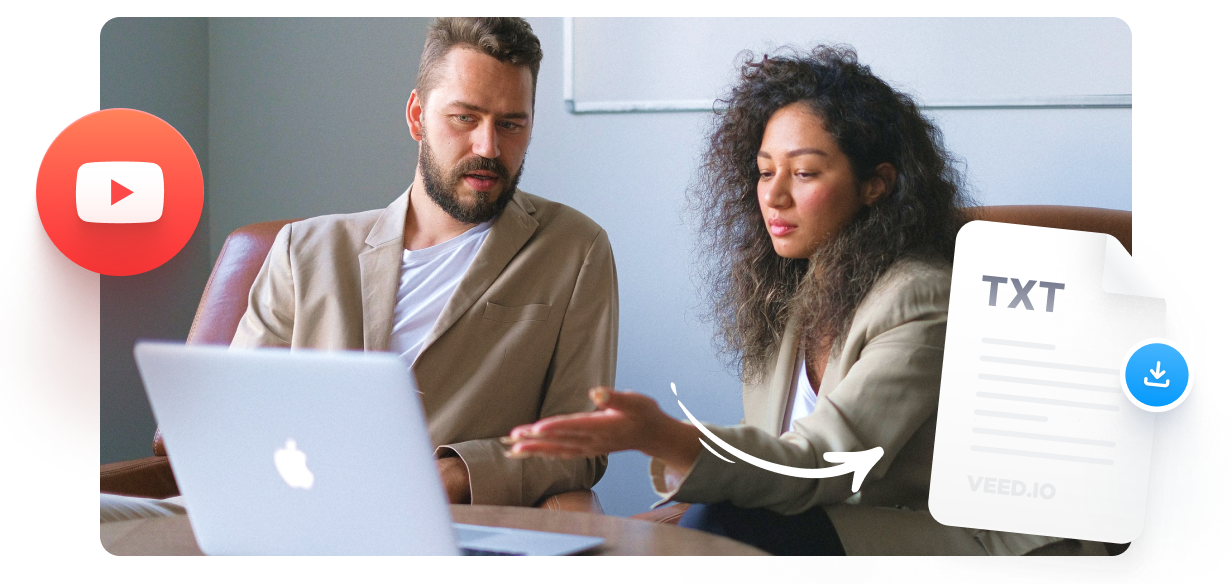

A transcript gives your viewers an alternative to consuming your content, keeping them from bouncing off your site. Not every environment is conducive to playing audio. Now, consider all the people who discover your videos on their smartphones while commuting to work on the train, waiting in line at the post office, or eating lunch in a noisy cafeteria. A 2018 Nielson poll found that we spend almost half of our life on the internet, watching TV, or on our phones. adults report being “almost constantly” online. Viewers in sound-prohibitive environmentsĪ 2021 Pew Research study found that 31% of U.S. Video accessibility is mandated for broadcast media and for “places of public accommodation” like museums, libraries, and universities. Accessibility laws vary by state, but federal law requires that videos be transcribed and captioned for all federal agencies.

Making your online video accessible isn’t just a nice-to-have-for many organizations, it’s required by law. To create an equivalent viewing experience for deaf and hard-of-hearing viewers, use your video transcript to create closed captions. A video transcript relays more than just speech it should also include speaker IDs and essential non-speech sounds like or. People with limited or no hearing cannot consume your videos without accompanying text. So, who else joins your audience when you add video transcripts? Deaf and hard-of-hearing viewers The more people who are able to watch your videos, the more views you will get. Video Transcription Increases Accessibility
#Transcribe a youtube video how to#
Learn how to create captions yourself using the DIY method ➡️ģ. The user can click on the text to jump to that point of the video, which is a much smoother UX than having to mark timecodes when navigating a video. The timed text keeps the viewer engaged and reinforces the content since it can be read and heard at the same time. An interactive transcript highlights words as they are spoken in time with the video. You can also make your video transcript interactive. Searchable transcripts are hugely useful for researchers, but they’re also beneficial for average users, too. With a tool like a playlist search plugin, you can scan an entire video library for mentions of specific words and hop to the moment(s) in a video where that word is spoken. Transcripts make your videos searchable by search engines, but you can also implement onsite search capabilities. Here are two other transcript features that can improve the user experience: Playlist Search Transcripts also make it easier to search the video for keywords or topics. Once a viewer has access to your video transcript, there is great potential for a better user experience.Įveryone learns differently, so adding a transcript gives viewers another option for digesting your video’s content. Use your transcript to find prominent keywords mentioned in your video, then adjust your on-page video SEO elements to match the phrasing of the keyword.īoost your video SEO with captions and transcripts ➡️

Transcripts also help your SEO keyword strategy. A transcript makes your video more searchable across the web and within your website or archive. Since search engines can’t crawl video, transcripts provide valuable text that can be indexed and ranked.

In fact, 6.26% of all unique visitors who came from search traffic landed on a transcript page. In less than a month, the pages with video transcripts climbed the ranks in Yahoo and Bing for a targeted keyword phrase, moving from no listing, up to 14th, then to 9th and 11th place, respectively.īy adding video transcription to their web pages, This American Life saw a significant increase in inbound traffic and user engagement. Providing a transcript is proven to boost your video search engine optimization (SEO).Ī 3-week SEO study by SafeNet compared the search rank for web pages with video transcripts. Increase accessibility for users who are deaf or hard-of-hearing.Improve your search engine optimization.


 0 kommentar(er)
0 kommentar(er)
